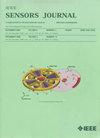Enhancement of Precise Orbit Determination for GPS III Satellites by Constructing the a Priori Solar Radiation Pressure Model
IF 4.3
2区 综合性期刊
Q1 ENGINEERING, ELECTRICAL & ELECTRONIC
引用次数: 0
Abstract
Precise and reliable satellite orbit and clock products are crucial for the Global Positioning System (GPS) to provide high-precision positioning, navigation, and timing services. However, for the new-generation GPS III satellites, their stretched satellite body poses challenges in the accurate modeling of solar radiation pressure (SRP), thereby limiting the accuracy of precise orbit determination (POD) and clock estimation. This contribution constructs the a priori box-wing (PBW) SRP model for GPS III satellites based on the surface optical coefficients estimated with true GPS III measurements. The proposed model, known as PBW, is then validated in comparison with the five-parameter empirical CODE orbit model (ECOM) and the nine-parameter extended ECOM (ECOM2). The superiority of PBW is demonstrated through the decreased 3-D orbit day boundary discontinuities (DBDs) by 9.9 mm (18.4%) and 24-h overlapping clock errors by 1.4 mm (4.8%) compared to the ECOM model during noneclipse periods. In contrast to ECOM2, the PBW model shows more stable error characteristics in both indicators, while noticeable improvements can also be observed in 24-h overlapping clock errors. To overcome the degradation of POD performance during eclipse seasons, the proposed PBW model is further enhanced by introducing an additional first-order sine term in the Sun-satellite direction (通过构建先验太阳辐射压力模型加强 GPS III 卫星的精确轨道测定
精确可靠的卫星轨道和时钟产品对于全球定位系统(GPS)提供高精度定位、导航和授时服务至关重要。然而,对于新一代GPS III卫星来说,其卫星体的拉伸给太阳辐射压力(SRP)的精确建模带来了挑战,从而限制了精确定轨(POD)和时钟估计的精度。本文基于真实GPS III测量估算的表面光学系数,构建了GPS III卫星的先验箱翼SRP模型。该模型被称为PBW,然后与五参数经验CODE轨道模型(ECOM)和九参数扩展ECOM (ECOM2)进行了比较验证。在非日食期间,与ECOM模型相比,PBW模型的3-D轨道日边界不连续(dbd)减小了9.9 mm(18.4%), 24小时重叠时钟误差减小了1.4 mm(4.8%)。与ECOM2相比,PBW模型在两个指标上都表现出更稳定的误差特征,同时在24小时重叠时钟误差上也可以观察到明显的改善。为了克服日食季节POD性能下降的问题,提出的PBW模型通过在阴影中引入太阳-卫星方向(${D} _{s}$)的附加一阶正弦项进一步增强。与ECOM2、PBW和ECOM $+ {D}_{s}$相比,具有${D} _{s}$的PBW模型三维dbd分别降低了12.7%、35.6%和21.0%,24小时重叠时钟误差分别降低了20.5%、40.5%和15.5%。
本文章由计算机程序翻译,如有差异,请以英文原文为准。
求助全文
约1分钟内获得全文
求助全文
来源期刊

IEEE Sensors Journal
工程技术-工程:电子与电气
CiteScore
7.70
自引率
14.00%
发文量
2058
审稿时长
5.2 months
期刊介绍:
The fields of interest of the IEEE Sensors Journal are the theory, design , fabrication, manufacturing and applications of devices for sensing and transducing physical, chemical and biological phenomena, with emphasis on the electronics and physics aspect of sensors and integrated sensors-actuators. IEEE Sensors Journal deals with the following:
-Sensor Phenomenology, Modelling, and Evaluation
-Sensor Materials, Processing, and Fabrication
-Chemical and Gas Sensors
-Microfluidics and Biosensors
-Optical Sensors
-Physical Sensors: Temperature, Mechanical, Magnetic, and others
-Acoustic and Ultrasonic Sensors
-Sensor Packaging
-Sensor Networks
-Sensor Applications
-Sensor Systems: Signals, Processing, and Interfaces
-Actuators and Sensor Power Systems
-Sensor Signal Processing for high precision and stability (amplification, filtering, linearization, modulation/demodulation) and under harsh conditions (EMC, radiation, humidity, temperature); energy consumption/harvesting
-Sensor Data Processing (soft computing with sensor data, e.g., pattern recognition, machine learning, evolutionary computation; sensor data fusion, processing of wave e.g., electromagnetic and acoustic; and non-wave, e.g., chemical, gravity, particle, thermal, radiative and non-radiative sensor data, detection, estimation and classification based on sensor data)
-Sensors in Industrial Practice
 求助内容:
求助内容: 应助结果提醒方式:
应助结果提醒方式:


